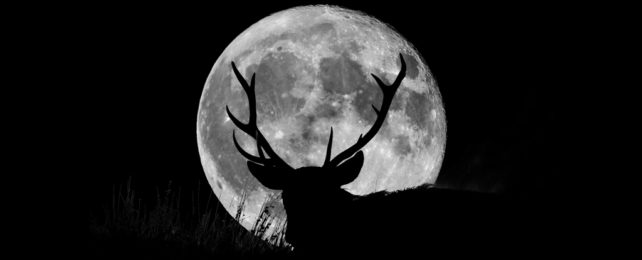It's a question you might well have asked yourself whilst gazing up at the night sky: Could Earth support more moons like the Moon? Or would the gravitational forces involved pull our planet out of its safe trajectory?
The answer, according to a new study, is that Earth could support two more Moon-sized moons, and even more if they were smaller. That's based on detailed physics simulations covering a period of 3,000 years.
It's an interesting hypothetical to explore, but there's a practical purpose to the research too: it could help astronomers in figuring out how Earth formed, and in finding other Earth-like planets (and their moons) out in the wider Universe.
"From this work, the dynamical stability of moon systems limits the existence of exomoons for Earth-analogs in their respective habitable zones, where confirmation from future observations are needed," write the researchers in their published paper.
The simulations run by the team were constrained by the distances between the hypothetical moons and Earth, and between the moons themselves. A careful balance is needed to prevent a moon from drifting off into space or crashing into the planet that it's orbiting.
Three different moon sizes were analyzed too: one with the mass of our Moon, one with the mass of Pluto (about a sixth the size of the Moon), and one with the mass of the dwarf planet Ceres (about a hundredth the size of the Moon).
Based on the simulations, Earth can support up to three moons the size of our current Moon, up to four Pluto-sized moons, and up to seven Ceres-sized moons – assuming that they're all the same size, which they probably wouldn't be.
"Not all the moons of Jupiter and Saturn have the same size, so we can expect that multiple moons will have different sizes, and to have the absolute answer we would need to include that," physicist Suman Satyal, from the University of Texas at Arlington, told New Scientist.
Jupiter and Saturn each have dozens of moons while Mercury and Venus don't have any, which scientists think is probably because of the different ways in which these planets formed and their different positions in the Solar System.
Earth and Earth-like worlds elsewhere in the Universe could potentially support more than seven moons if they were of varying size, the researchers say. That, however, is beyond the scope of the current study, as was the gravitational pull from planets.
"Our model ignores the gravitational effects of all the other planets within the Solar System," said Billy Quarles, a physicist from the University of Texas Arlington.
"This is important when we look beyond the Solar System because there are a large number of systems with only a single planet candidate. There are currently two exomoon candidates, but they both orbit Jupiter-like planets at about one astronomical unit," which is roughly 150 million kilometers (93 million miles).
Additional moons around Earth would have certainly made the night sky more interesting. They would need to orbit at different distances from Earth for this to work, in which case they would appear in the sky to be differently sized – and would be in different phases (such as full or crescent) too.
"Many films illustrate the possibility of exomoons, such as Pandora from Avatar, or the forest moon Endor from Star Wars," said Quarles.
"Our study could help future works appear more astronomically accurate."
The research has been published in the Monthly Notices of the Royal Astronomical Society.
